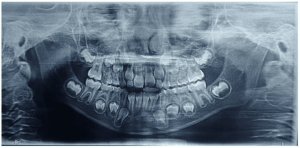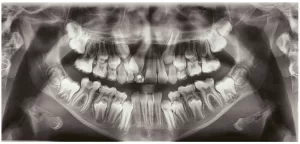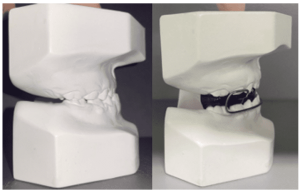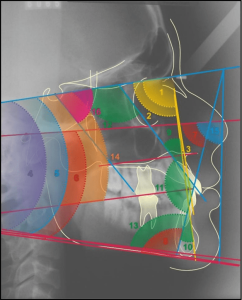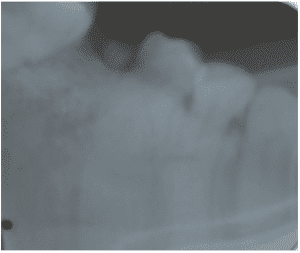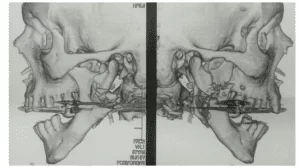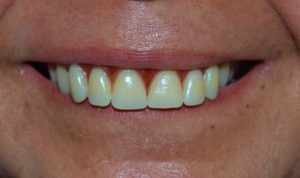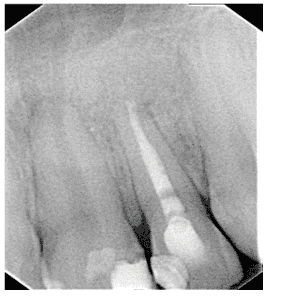ORIGINAL ARTICLE
OLIVEIRA, Bruna Cecilia Caixeta de [1]
OLIVEIRA, Bruna Cecilia Caixeta de. The importance of preventive dentistry on the oral health of individuals and the economy in the United States. Revista Científica Multidisciplinar Núcleo do Conhecimento. Year. 08, Ed. 04, Vol. 05, pp. 131-141. April 2023. ISSN: 2448-0959, Access link: https://www.nucleodoconhecimento.com.br/dentistry/importance-of-preventive-dentistry, DOI: 10.32749/nucleodoconhecimento.com.br/dentistry/importance-of-preventive-dentistry
ABSTRACT
Oral problems are related to the general health of individuals. When not preventively cared for or not treated properly, caries lesions, pain, discomfort, risks of spreading infections throughout the body, which can even lead to hospitalization. The absence of preventive care in oral health increases the chances of tooth loss, reducing the person’s ability to chew and compromising their nutrition. In addition, there is the aesthetic issue, because the person with teeth problems avoids smiling and even avoids interacting socially. The dental problems of a population unable to afford them, economically affect the general health system, since oral diseases refer to the impairment of people’s health, who will resort to formal medical care at some point in their existence. This literature review article featured specialized materials in Oral Health on the reality of low-income North Americans and their oral problems, using articles obtained from Google Scholar. As an objective, it is intended to demonstrate the importance of preventive care for dental health, through educational actions in needy communities, covering people of all ages, especially children. There is a need for specialized care for patients of different ages who are already affected by oral problems, and also about the importance of the efforts and investments of the US government in massive campaigns related to preventive dental care for people of all ages that make up the its poorest population.
Keywords: Underprivileged population, Primary health, Oral Health Education, Collective Health, Public Health.
INTRODUCTION
According to the World Health Organization (WHO), “oral diseases affect approximately 3.5 billion people around the world”. In addition, they are diseases that can be avoided, but which, once installed, cause “pain, discomfort, disfigurement and even death” (WHO, 2022).
For the acting director of the National Institute of Health (NIH), Dr. Lawrence Tabak, the last report prepared on oral and general health in the Americas, dated 2022, demonstrated that, despite the technological advances achieved in recent decades in the health area, there are still millions of North Americans who suffer from lack of care preventive dental procedures, as well as the fact that many individuals consume illicit substances, such as: marijuana, cocaine, crack, ecstasy, LSD, inhalants, heroin, barbiturates, morphine, Skank, mushroom tea, amphetamines, chloroform, opium, etc. (DENTAL TRIBUNE, 2022).
The fact is that “dental health care is not part of general health coverage in the United States and was excluded from Medicare when this program was created in 1965”, as reported by Agence France Presse (2021).
Since costs for dental treatments are very high in the United States, these services become inaccessible to the low-income population. In 2021, it was found that “68% of African Americans and 61% of Hispanics” do not have access to any dental treatment, which can lead to issues such as: physical pain, health complications caused by illness, preventing children from smile or that adults manage to get a job, especially in the service sector, in addition to psychological problems, due to embarrassment with their appearance (AGENCE FRANCE PRESSE, 2021).
According to the Administration of Health Resources and Services, the unmet demand substantially aggravates the oral and social problems of poor populations. These are aspects addressed by the Dental Tribune (2022), whose survey demonstrates the need for more professionals specialized in dentistry in the country, requiring a jump from 190,800 dentists in 2012 to 202,600 in 2025. In 2022, the US government estimated the need to hire 11,000 new dentists (AG IMIGRATION LAW, n.d.).
In view of the above, this literature review aims to demonstrate the importance of preventive care for oral health, through educational activities in needy communities, covering people of all ages, but especially children.
MATERIAL AND METHODS
This review was elaborated from electronic searches in specialized national and international journals, using articles published in Portuguese and English, being selected to compose this research the articles obtained in the scientific databases of Google Scholar, specialized in oral health. It was decided to use articles between 2008 and 2022, which deal specifically with: prevention; lack of prevention; basic hygiene and health care; the current US health care system; the consequences related to diseases caused by the absence of basic care in prevention and oral hygiene since childhood; deficit of professionals in oral health in the United States; financial losses for the coverage of urgencies and emergencies with oral health; and general health of the low-income class. There was also specialized news on the subject.
THE HEALTH SYSTEM IN THE UNITED STATES
In a brief timeline, it can be seen that the United States, even with highly qualified professionals and the most modern technologies, continues to have a primarily private health system, despite attempts to implement global health plans:
1854: Dorothea Diz proposes a project to establish a health system to care for the entire local population, which was vetoed by President Franklin Pierce, believing it was not a state assignment (VALINOR, 2022);
1930: new attempt at a health system proposal, presented by President Theodore Roosevelt, overthrown by Republican and Democratic congressmen (VALINOR, 2022).
1945: new proposal for a national health insurance plan presented by President Harry Truman, which was also rejected, given the end of World War II, with the law defining that health care would be exclusively private, except for the elderly and individuals from class below poverty, who would have access to Medicare and Medicaid, programs that guarantee emergency care (BOWES, 2020).
Thus, it was agreed that the options for North Americans were to pay, at private prices, for their own needs for medical and dental services or to be employed in companies that offer health insurance (LINN, 2021).
The problem is that many people do not have the financial capacity for such funding. In addition to the existing situation, the advent of the Covid-19 pandemic, in March 2020, undeniably exposed this reality, as the United States was at the top of the list of the most affected countries, having the highest number of cases and deaths in the planet, due to the fact that “each state has its own system, with specific rules, most of them with little regulation and operated mainly by the private sector” (LINN, 2021).
Faced with that reality, the world’s specialists agree that the absence of a universal health system and the centralization of decisions regarding the necessary care for individuals were the factors that led to the rise in the total number of cases, and there was even competition between mayors and governors to obtain the necessary inputs in their cities/states (LINN, 2021).
In practice, the pandemic raised US government spending to 19.7% in 2021, with the two existing local social programs with health – Medicare and Medicaid -, against 9.7% in 2019, thus surpassing the 4.1 trillion dollars earmarked for such programs in 2020 (LINN, 2021).
RESULTS AND DISCUSSION
ORAL DISEASES AND THEIR CONSEQUENCES FOR THE GLOBAL HEALTH OF INDIVIDUALS
The list of oral problems that can be avoided with preventive measures and that must be treated as soon as they appear, is composed of cases such as: “dental caries, periodontal diseases, loss of teeth and oral cancer”, as defined by the WHO. In addition to these, mention may be made of “orofacial clefts, noma (severe gangrenous disease that begins in the mouth, affecting mainly children) and orodental trauma” (WHO, 2022).
Dourado et al. (2021), define that prevention means adopting measures that prevent the emergence of diseases, aiming to reduce their incidence and prevalence. Health promotion, on the other hand, refers to the adoption of measures that promote the quality of life of individuals, which can be done by training leaders in communities.
In turn, Martins et al. (2019), report that oral hygiene is one of the factors inherent to good health of teeth and mouth. In addition, the consumption of sugary foods and their ingestion outside of normal eating hours contribute to the emergence of cavities, which, if not treated quickly, can progress to the loss of the affected tooth or even to some other disease. These are aspects that lead to a third very relevant need for oral health, which is brushing at every meal and/or in cases of ingestion of any other foods, in order to avoid the appearance of bacterial plaques.
Among the different oral diseases described by the WHO, the following can be mentioned: dental caries, periodontal (gum) disease, edeutulism (total loss of teeth), oral cancer, dental trauma, noma, cleft lip and palate, risk factors (WHO, 2022 ).
In turn, the data collected by the National Center for the Prevention of Chronic Diseases and Health Promotion (NCCDHPP, 2022), report that the oral disease that has most affected the North American population is: caries, which affects one in six children aged between 6 and 11 years; half of adolescents aged 12 to 19 years; one out of four adults; and smokers, who are prone to losing all their teeth.
IMPORTANCE OF ORAL HEALTH
Figueiredo; Faustino-Silva and Bez (2008), explain that the needy population, as a rule, does not have access to adequate medical and dental care. They argue that dentistry professionals are far from social problems, but need to be aware of them, to act in preventive actions, optimizing incalculable government resources in general health.
Trigo (2022), argues that oral prevention regarding the frequency of consumption of sugary foods, such as: chewing gum, candies, soft drinks and ice cream between meals, can be decisive for the emergence of cavities. In this scenario, the author reports that educational actions contribute to the whole family. Among them, there are three general approaches that are important so that cavities in early childhood are avoided: “education of mothers, in order to influence their diet and habits, as well as those of their children; carrying out examinations and preventive measures in dental clinics; habits at home. The author also defends the inclusion of low-income people in oral prevention programs and the offer of fluoride varnish applications, fluoride toothpastes, fluoride supplements, sealants and dietary advice.
Already, Saliba et al. (2020), explain that the academic training of dentists should include disciplines on the political role of health professionals, in the face of economic inequalities.
For the WHO, the lack of education and basic hygiene lead to oral problems, pain, discomfort and oral disfigurement, interfering with the self-esteem of individuals. It also refers that: 1. half of the world’s population does not have access to coverage of basic health services; 2. there are an average of 100 million people living in extreme poverty; 3. over 800 million people (12% around the world) invest 10% of their budget in health; 4. Low-income people cannot afford their needs in oral health and general health (WHO, 2019).
Since middle/low income countries do not provide preventive services and treatments in oral health, the Global Oral Health report issued by the WHO, in 2022, estimates that 3.5 billion people around the world will be affected by oral diseases; as for individuals living in middle-income countries, 3 out of 4 of these individuals will be affected by these problems; also points out that “514 million children suffer from caries in deciduous teeth” (WHO, 2022). Added to the issues of lack of oral hygiene are the consumption of tobacco and alcohol, worsening people’s general health.
UNIVERSAL HEALTH COVERAGE (UHC)
The ideal for underserved populations in different countries would be Universal Health Coverage (UHC), as this program offers all individuals and communities the right to receive all the health services they may need at any time throughout their lives, without individual costs, nor exclusions from the services they may need for economic and financial reasons (WHO, 2022).
According to WHO (WHO, 2022), establishing UHC is one of the goals established by all nations in the world, based on the Sustainable Development goals, that is: “to include all the fame of essential and quality health services, from health promotion to prevention, treatment, rehabilitation and palliative care; take steps towards equity, development priorities and inclusion and social cohesion”.
The impediment for this to happen, nationally or globally, are large investments, which goes against the interests of different layers of North American society (WHO, 2019). The absence of global health care for citizens is presented in the article by Agencia France Presse (2021), specifically, in the reports of Dr. Roslyn Kellun, director of Mission of Mercy, on “inflamed gums, decayed teeth, patients in pain and children who dare not smile […]”. According to Dr. Kellun, are people who “have to choose between getting their teeth fixed and paying their bills, gas, food or rent”.
CURRENT DEFICIT OF PROFESSIONALS IN DENTISTRY
The current number of dentists working in the United States is considerably deficient, as is the total number of technical professionals specialized in oral hygiene, who represent a work front that can positively impact the work of dentists, in addition to providing relative financial savings for the North American global health system.
In 2016, there was a deficit of 190,800 dental professionals, as reported by the Health Resources and Services Administration, an agency of the United States Department of Health and Human Services, impacting the needs of the North American low-income population (DENTAL TRIBUNE, 2022 ).
Already in 2022, the American Dental Association (ADA) and the Federal Council and Dentistry (CFO)[2], tabulated the existence of “61 dentists for every 100 thousand inhabitants, while in Brazil, this number reaches 171 professionals, that is, there are 201 thousand dentists in one country, compared to 372 thousand in the other” (AG IMIGRATION LAW, n.d.). It is estimated that there is a need for 11,000 new dentists in the United States to work in the states of California, Missouri, Texas, Alaska and Florida, which are the locations with the most vacancies to be filled.
EXISTING SOLUTIONS
The oral and general health situations and problems of the poorest population in the United States have been faced by different means. During the 74th World Health Assembly in 2022, WHO presented a plan for universal oral health coverage for all individuals and communities by 2030 (WHO, 2022).
According to Rota (2007), in recent decades, public health care, from the perspective of oral health aimed at children and other people, has shown improvements in dental care and a reduction in dental caries in children and young people, in addition to a decline in the loss of teeth in adults and seniors over 60 years. The preponderant factors for this advance were: insertion of fluoride in drinking water and in the composition of toothpastes, reduction in sugar consumption and, not least, programs of education and promotion of oral health for the most needy population.
Among the actions aimed at the American low-income population, the Mission of Mercy is a dental care program offered by the charitable Christian organization, providing free medical and dental care to people in urgent/emergency dental situations, residing in the United States. This organization operates in six different points in the region of Maryland and Pennsylvania (USA), providing care through a “mobile Dental Unit, equipped with 2 dental operators and a preparation chair” (MISSION OF MERCY, n.d.).
In addition to fillings and extractions, dental exams, x-rays and instructions on proper dental hygiene are provided, as well as toothbrushes and dental floss. Reports from the specialists who make up the Mission of Mercy describe that many patients come to them with “significant decay, infection and pain” (MISSION OF MERCY, n.d.).
The National Center for Chronic Disease Prevention and Health Promotion (NCCDHPP, 2022), acts in the prevention and care of the oral health of children, aiming to reduce the incidence of cavities, chronic diseases and medical care resulting from them, through the Force -Assignment of Preventive Services of the United States, with the objective of promoting government financial savings.
Its actions in school programs include: 1. free applications of dental sealants on children’s permanent posterior teeth, preventing the occurrence of 9 out of 10 cavities – this simple act is capable of preventing approximately one million cavities in children belonging to families of low income; 2. community water fluoridation, reaching people of all ages and different levels of education and income – this being an action that affects more than 200 million people (NCCDHPP, 2022).
In turn, the Hispanic International Mission, led by Doctor Nayagara Viera, provides free dental consultations through volunteer professionals, benefiting children with workshops on health education and providing free material for oral hygiene, relevant actions not only in the United States, as around the world (NCCDHPP, 2022).
With the intention of taking better care of the elderly and people with disabilities, the Biden Government created a massive social investment program, called “Reconstruir Melhor”, aimed at “reimbursing dental care expenses for beneficiaries of the Medicare public health program” (AGENCE FRANCE PRESS, 2021).
There was strong resistance from the Republican Party, and also from a good part of the members of the Democratic Party (to which the current president belongs), for the reduction of US$ 1.75 trillion to be invested, leading the proposal to be removed from this project; in turn, the Dental Association of the United States (ADA) was also against such a measure, to prevent the said program from covering a larger slice of North American society, on the grounds that the said measure “should benefit only the poorest” (AGENCE FRANCE PRESSE, 2021).
POSSIBLE PREVENTIVE MEASURES
The reported diseases can be reduced through preventive measures, such as: drinking water, with adequate exposure to fluoride; toothbrushing twice a day, including the use of toothpaste containing fluoride (1,000 to 1,500 ppm), as this composition, combined with other components, helps to reduce tooth sensitivity, reduce the accumulation of plaque and tartar, in addition to combating the bad breath.
It is also necessary to consume a balanced diet without free sugars, which should be rich in fruits and vegetables. The consumption of tobacco, alcohol and other chemical substances, such as areca nuts, should be avoided (WHO, 2022).
In view of the aggravation and needs of the North American low-income population, there are actions that can be implemented, such as: the integration/connection of health professionals, in the sense of including in their training/acting disciplines that contemplate a “workforce of more diversified oral health” (DENTAL TRIBUNE, 2022), that is, an awareness of the existing reality among the different social strata.
CONCLUSION
The lack of access to prevention since childhood and/or to the necessary treatments for their oral problems leads people belonging to the low-income population to physical and social suffering and, sometimes, to systemic diseases. The precariousness in which a large part of the North American population lives prevents these individuals from having access to quality oral care, since the local health system does not offer medical and dental coverage or basic assistance.
Added to this issue, the deficit of professionals specialized in dentistry and technicians who support them in oral education and prevention, fundamental actions to prevent the emergence of oral diseases. These are issues that require actions and public investments by the US government regarding basic actions for teaching and preventing oral hygiene.
REFERENCES
AGENCE FRANCE PRESSE. Sem acesso à saúde dental, milhões de americanos vivem com dor de dente. Agence France Presse, 2021. Disponível em: https://www.correiobraziliense.com.br/mundo/2021/11/4959683-sem-acesso-a-saude-dental-milhoes-de-americanos-vivem-com-dor-de-dente.html. Acesso em: 16/01/2023.
AG IMIGRATION LAW. Programa levará mil dentistas para trabalhar nos EUA em 2022. Ag Imigration Law, s.d. Disponível em: https://agimmigration.law/projeto-da-ag-immigration-ira-levar-mil-dentistas-para-os-eua-em-2022/. Acesso em: 30/01/2023.
BOWES, Claire. Porque os EUA foram a única potência ocidental a rejeitar o sistema de saúde universal após a 2ª Guerra Mundial. BBC News, 2020. Disponível em: https://www.bbc.com/portuguese/geral-54311898. Acesso em: 30/01/2023.
DENTAL TRIBUNE. Relatório sobre a saúde bucal da América destaca problemas de longa data e fornece algumas soluções. Dental Tribune, 2022. Disponível em: https://br.dental-tribune.com/news/relatorio-sobre-a-saude-bucal-da-america-destaca-problemas-de-longa-data-e-fornece-algumas-solucoes/. Acesso em: 16/01/2023.
DOURADO, Ana Cláudia Amorim Gomes; CHAVES, Adriane Tenório Dourado; CASTRO, Carla Cecília Lira Pereira de; MENDONÇAS, Giovana Lordsleem; BARBOSA, Ivana Oliveira; ALMEIDA, Letícia Veloso de; SIVA, Mariana Pereira de Souza da. Promoção e prevenção da saúde bucal na pandemia do Covid-19: Relato de Experiência. Revista de Extensão da UPE, v. 6, número especial, p. 52-60, 2021.
FIGUEIREDO, Márcia C.; FAUSTINO-SILVA, Daniel Demétrio; BEZ, Andressa da Silveira. Autopercepção e conhecimento sobre saúde bucal de moradores de uma comunidade carente do município de Porto Alegre-RS. ConScientiae Saúde, vol. 7, n. 1, p. 43-48, 2008. Disponível em: https://periodicos.uninove.br/saude/article/view/934/1027. Acesso em: 16/01/2023.
LINN, Juliana Soares. Como funciona a Saúde Pública nos EUA? Medical Boards Study Academy, 2021. Disponível em: https://medboardsacademy.com/2021/07/25/como-funciona-a-saude-publica-nos-eua/. Acesso em: 16/01/2023.
MARTINS, Rafaela Gomes; GOMES, Sheili Negrão; SANTOS, Shirleiry Alencar Fausto dos; MOREIRA, Suzane Cecilia Dias de Souza; PRADO, Bárbara Grassi. Relação entre saúde bucal e consumo alimentar em adultos de Cuiabá-MT. Revista Científica do Hospital Santa Rosa, n. 9, p.41-51, 2019.
MISSION OF MERCY. Medical and Dental Clinic Announcement. Mission Of Mercy, s.d. Disponível em: https://www-amissionofmercy-org.translate.goog/maryland-pennsylvania/clinic-location/?_x_tr_sl=en&_x_tr_tl=pt&_x_tr_hl=pt-BR&_x_tr_pto=sc. Acesso em: 17/01/2023.
NATIONAL CENTER FOR CHRONIC DISEASE PREVENTION AND HEALTH PROMOTION – NCCDHPP. Health and Economic Benefits of Oral Health Interventions. NCCDHPP 2022. Disponível em: https://www.cdc.gov/chronicdisease/programs-impact/pop/oral-disease.htm. Acesso em: 17/01/2023.
ROTA, Lucimara Magon. Educação em Saúde Bucal para Adultos. Monografia (Especialização em Odontologia do Trabalho) – Faculdade de Odontologia de Piracicaba, Universidade Estadual de Campinas. Piracicaba, 2007.
SALIBA, Tânia Adas; CUSTÓDIO, Lia Borges de Mattos; CALSAVARAB, Maria Bethânia Ramos; SALIBAA, Nemre Adas; MOIMAZ, Suzely Adas Saliba. Conhecimento de Acadêmicos Sobre a Área de Atuação da Saúde Coletiva. Rev. Ens. Educ. Cienc. Human., v. 21, n. 2, p. 213-219, 2020. DOI: https://doi.org/10.17921/2447-8733.2020v21n2p213-219. Disponível em: https://seer.pgsskroton.com/index.php/ensino/article/view/7888. Acesso em: 16/01/2023.
TRIGO, Flávia Carvalho. Relato de experiência em atividade do grupo Pet Odontologia: plantando saúde na horta comunitária da zona norte da cidade de Araraquara. Trabalho de Conclusão de Curso (Graduação em Odontologia) – Faculdade de Odontologia, Universidade Estadual Paulista. Araraquara. 2022.
VALINOR, Rodrigo. Sistema de Saúde Americano: entenda como funciona. Remessa online, 2022. Disponível em: https://www.remessaonline.com.br/blog/sistema-de-saude-americano/. Acesso em: 16/01/2023.
WORLD HEALTH ORGANIZATION – WHO. Oral health. WHO, 2022. Disponível em: https://www.who.int/news-room/fact-sheets/detail/oral-health#:~:text=Key%20facts,affect%20nearly%203.5%20billion%20people. Acesso em: 17/01/2023.
WORLD HEALTH ORGANIZATION – WHO. Cobertura universal de saúde (CUS). WHO, 2019. Disponível em: https://www.who.int/world-health-day/world-health-day-2019/fact-sheets/details/universal-health-coverage-(uhc). Acesso em: 23/01/2023.
APPENDIX – FOOTNOTE
2. Conselho Federal e Odontologia (CFO).
[1] Doctorate, Specialization, Graduation. ORCID: 0000-0003-4752-3311. Currículo Lattes: http://lattes.cnpq.br/2816384290688924.
Submitted: February 9, 2023.
Approved: April 03, 2023.

